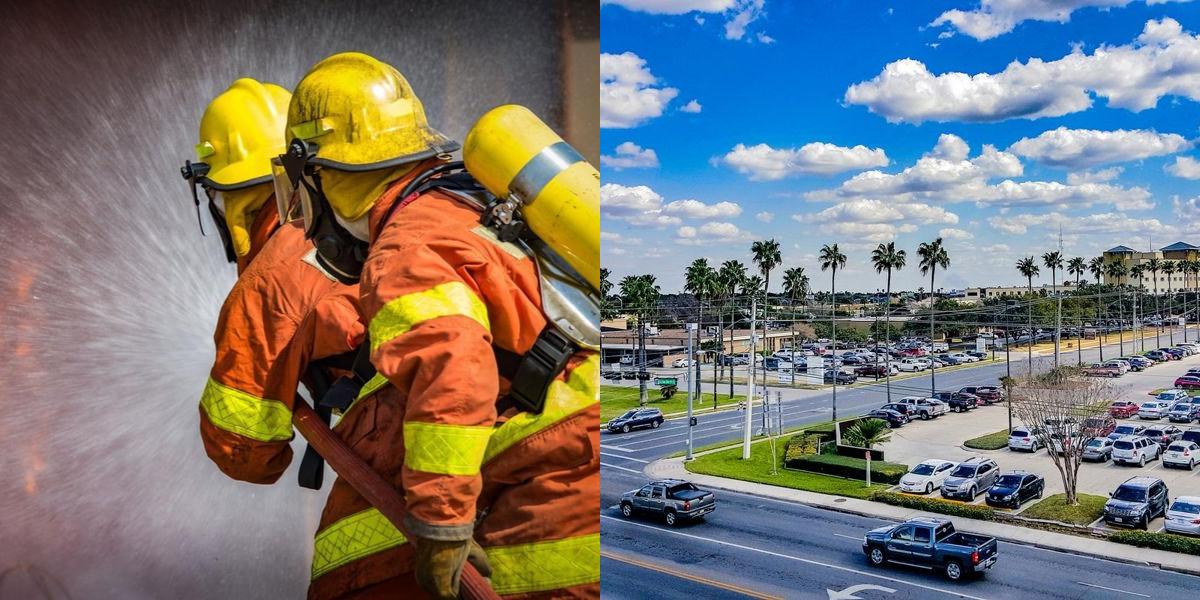How to Become a Firefighter in Texas

What is a Firefighter?
Firefighters are highly trained professionals who are responsible for responding to emergency situations involving fires, accidents, and other hazardous incidents. They work to protect lives and property by extinguishing fires, providing emergency medical care, and conducting rescue operations.
The responsibilities of a firefighter include:
- Responding to emergency calls and assessing the situation
- Operating fire equipment, such as hoses, ladders, and extinguishers
- Putting out fires using various techniques and strategies
- Providing emergency medical care to injured individuals
- Conducting search and rescue operations
- Educating the public about fire safety and prevention
How do I get a job as a Firefighter?
After obtaining your firefighter certification, the next step is to find a job as a firefighter. Here's how you can increase your chances of landing a firefighting job:
-
Research job opportunities: Start by researching job opportunities in your area. Firefighter positions may be available in municipal fire departments, industrial fire brigades, and federal agencies. Look for job postings on the websites of fire departments, government agencies, and job search websites. Networking with other firefighters and attending career fairs and job fairs can also help you find job leads.
-
Prepare your resume: Your resume is an important tool for showcasing your qualifications and skills to potential employers. Tailor your resume to highlight relevant experience, such as volunteer firefighting, emergency medical services training, and any specialized skills or certifications you may have. Include your firefighter certification and any other relevant certifications or licenses. Be sure to proofread your resume for any errors or typos before submitting it.
-
Write a compelling cover letter: A well-written cover letter can help you stand out from other applicants. Use the cover letter to explain why you are interested in the firefighting profession and why you are a good fit for the specific job you are applying for. Highlight any relevant experience or skills that make you a strong candidate. Address the cover letter to the hiring manager or recruiter by name, if possible.
-
Prepare for the interview: Once you have submitted your application and been selected for an interview, it's important to prepare for the interview. Research the fire department or organization you are interviewing with to familiarize yourself with their mission, values, and operations. Practice answering common interview questions, such as why you want to be a firefighter, how you handle stressful situations, and how you work as part of a team. Dress professionally and arrive early for the interview.
-
Demonstrate your physical fitness: Firefighting is a physically demanding job, so it's important to demonstrate your physical fitness during the hiring process. Many fire departments require applicants to pass a physical fitness test as part of the selection process. This may include tasks such as climbing ladders, carrying heavy equipment, and dragging hoses. Train and prepare for the physical fitness test to ensure that you are in good shape and capable of meeting the physical demands of the job.
-
Be persistent and patient: Landing a job as a firefighter can be competitive, so it's important to be persistent and patient. Don't get discouraged if you don't get hired right away. Continue to apply for firefighter positions, network with other firefighters, and seek feedback on your application and interview performance. Consider gaining additional experience or certifications that may make you a stronger candidate in the future.
Career Paths and Opportunities after Becoming a Firefighter
Becoming a firefighter opens up a wide range of career paths and opportunities. Here are some of the options available to you after becoming a firefighter:
-
Fire Department Leadership: Once you have gained experience as a firefighter, you may have the opportunity to advance into leadership positions within the fire department. This may include roles such as captain, battalion chief, or fire chief. Leadership positions involve supervising and managing firefighters, coordinating emergency response operations, and developing department policies and procedures.
-
Specialized Rescue Teams: As a firefighter, you may have the opportunity to join specialized rescue teams. These teams are trained to respond to specific types of emergencies, such as technical rescues, hazardous materials incidents, or urban search and rescue operations. Joining a specialized rescue team allows you to develop specialized skills and knowledge in a specific area of firefighting.
-
Fire Inspector or Investigator: Fire inspectors and investigators play a crucial role in ensuring fire safety and investigating the cause of fires. As a fire inspector, you would be responsible for inspecting buildings and enforcing fire codes and regulations. As a fire investigator, you would be responsible for determining the cause and origin of fires and collecting evidence for legal proceedings.
-
Training and Education: Another career path after becoming a firefighter is training and education. Many experienced firefighters go on to become fire instructors, training the next generation of firefighters. This involves developing and delivering training programs, conducting drills and simulations, and staying up-to-date with the latest firefighting techniques and technologies.
-
Emergency Management: Firefighters often work closely with other emergency response agencies, such as police departments and emergency medical services. This exposure to emergency management can open up opportunities in the field. Emergency management professionals are responsible for coordinating and managing emergency response operations, developing emergency plans and procedures, and educating the public about emergency preparedness.
-
International Opportunities: Firefighting skills are in demand worldwide. Once you have gained experience as a firefighter, you may have the opportunity to work internationally. This could involve joining international firefighting organizations, participating in disaster response missions, or training firefighters in other countries.
How Much does a Firefighter Make?
The salary of a firefighter can vary based on factors such as location, experience, and the size of the fire department. According to the Bureau of Labor Statistics, the median annual wage for firefighters was $50,850 in May 2020. The lowest 10 percent earned less than $25,850, while the highest 10 percent earned more than $94,720.
For entry-level firefighters, the starting salary can be lower than the median wage. However, as they gain experience and move up the ranks, their salary can increase significantly. It's important to note that these figures are just averages, and the actual salary can vary depending on various factors.
Final Thoughts
Becoming a firefighter is a challenging and rewarding career choice. It requires dedication, physical fitness, and a commitment to serving and protecting your community. By obtaining your firefighter certification, gaining hands-on experience, and applying for firefighting jobs, you can take the first steps towards a fulfilling career as a firefighter. Remember to stay persistent, continue to learn and grow, and always prioritize safety in everything you do.
Contemplating a transition in your career or exploring various professional paths? Dreambound has written comprehensive guides on nearly every type of program to aid you in your decision.




